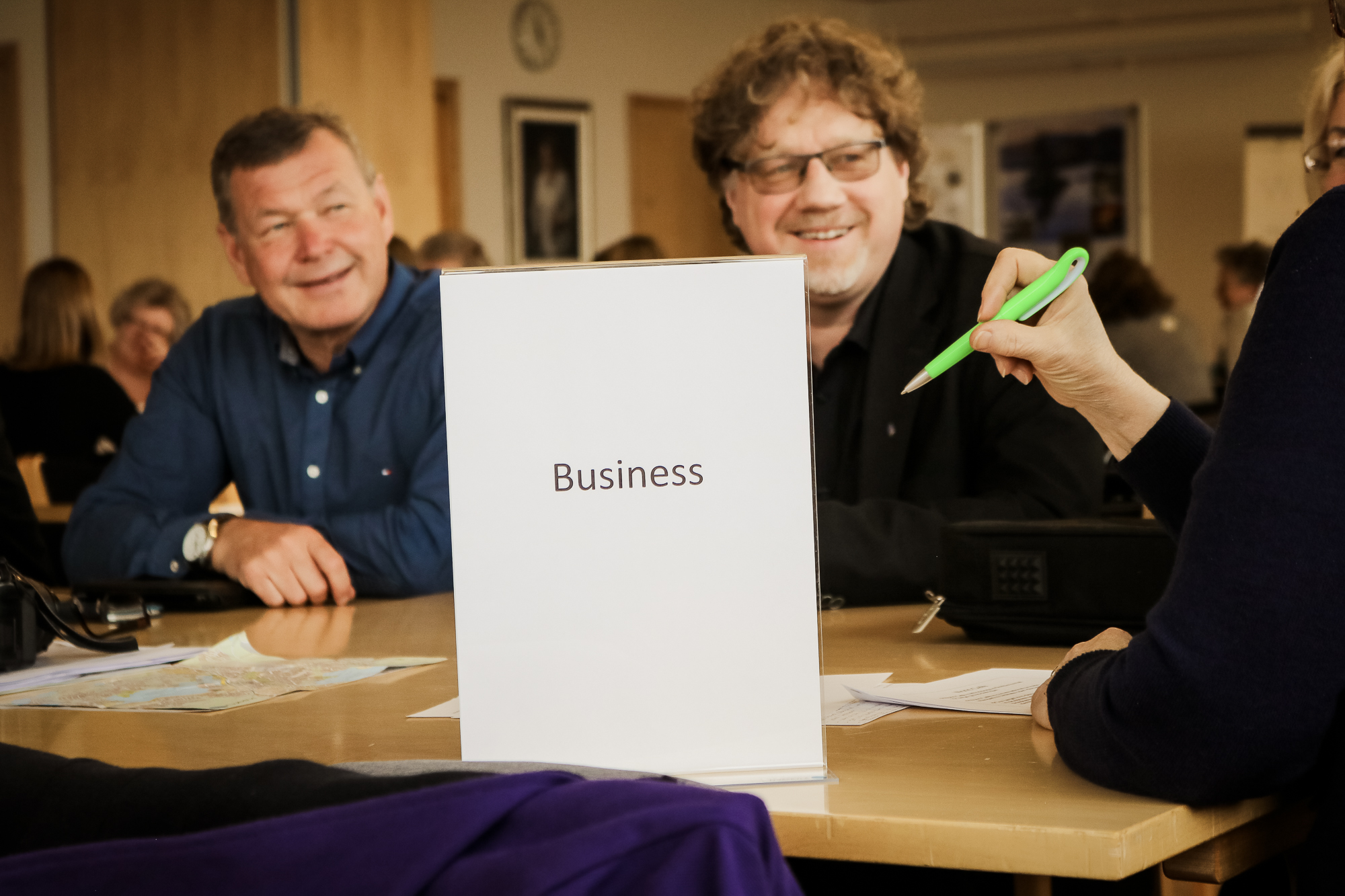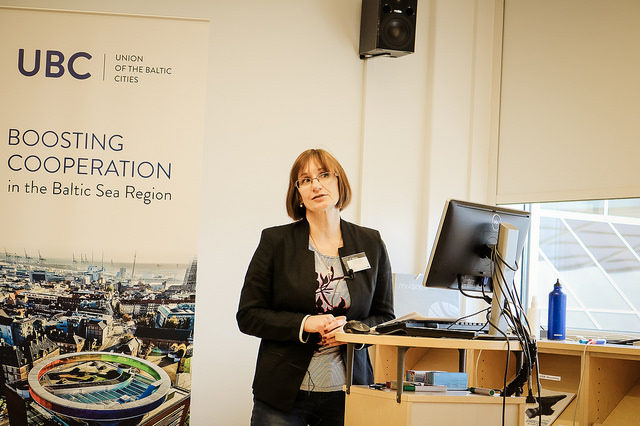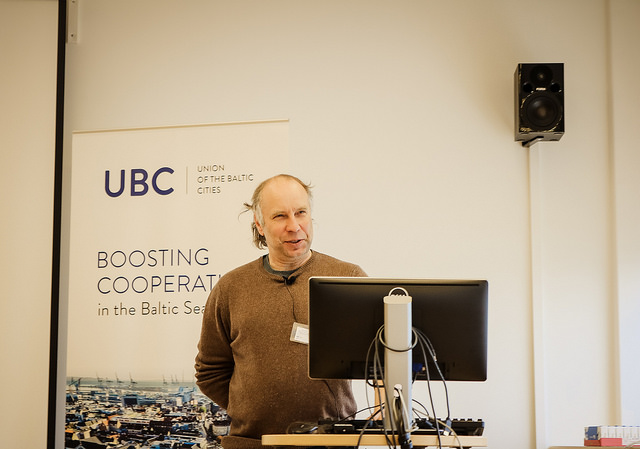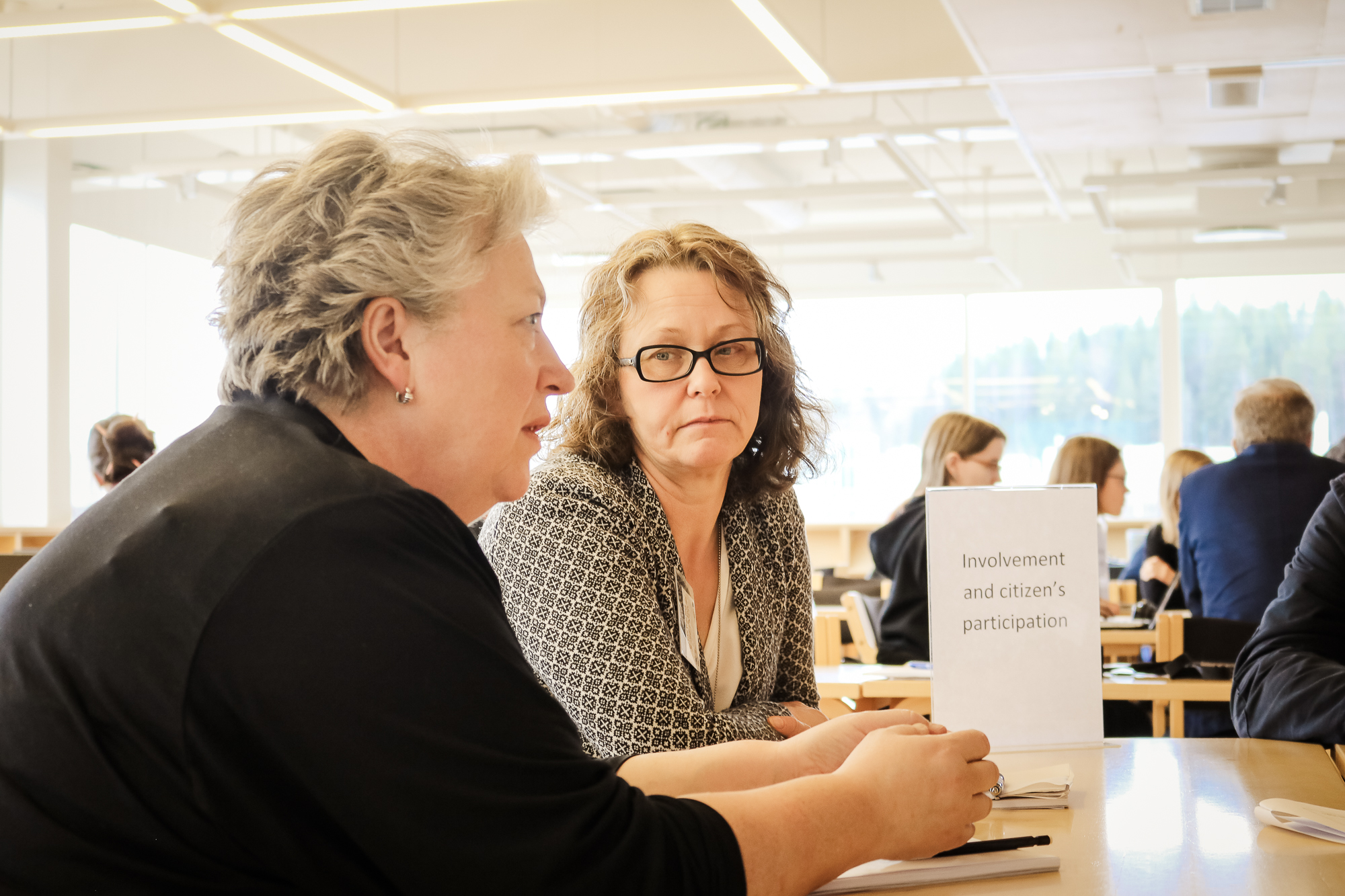During the spring days of May, city officials from different Baltic Sea Region countries took planes and buses, cars and trains to reach the heart of Finland – City of Jyväskylä. Between 16-18 May 2017 the meeting of the Sustainable Cities Commission of the Union of the Baltic Cities (UBC) took place, bringing together the experts from different cities and organizations on two fields – resource wisdom and biosphere reserves.
The City of Jyväskylä and the UBC Sustainable Cities Commission organized Meeting in the topical framework of Resource Wisdom and Biosphere areas in UBC cities on 16-18 May 2017. Participants and speakers arrived from different corners of the Baltic Sea – from Malmö (Sweden) to Liepaja (Latvia) and Klaipeda (Lithuania) to Karlskrona (Sweden) as well as from Hiiumaa (Estonia) to Turku (Finland).
Smart Kangas – from an old paper mill into smart city pioneer
Resource Wisdom is tied to the concept of a smart city – Jyväskylä has one such development area in the old paper mill premises – an old brownfield site – called Kangas. The development of the area has followed the Wise Kangas model, which highlights the role of sustainability, smart community, and smart tech solutions such as utilization of solar power, central garbage disposal, smart metering functions and data based district modeling among others.
The area is also a forerunner in applying IoT (Internet of Things) and living lab environment-approaches – making Kangas a good example of sustainable and smart districts. Due to the smart solutions, cyber security is of high importance and has been integrated into the smart city strategy of Kangas with the purpose of protecting the IoT devices and make transition into digital management of the Kangas area safe for the inhabitants.
Is it possible for a city to act wisely with its resources?
The afternoon sessions took a more concise look into Resource Wisdom and Circular Economy. In Resource wise solutions of cities -session, Finnish Innovation Fund Sitra presented Finnish Roadmap to a Circular Economy 2016–2025 . The roadmap highlighted the overall systemic change in how we create, use and dispose of products including the resource-wise use of raw materials including the utilization of the side streams in the most sustainable way, which potentially will create new jobs and services.
The discussions continued with exploring circular economy from the city-level by hearing of the achievements of the City of Jyväskylä and how other cities and regions could learn from their experiences – to challenge the “business-as-usual” mindset and to learn from experimenting and stakeholder participation and as a result, to achieve more together with less resources.
In the regional perspective cities should collaborate and rely on each other, as one cannot achieve circular economy on their own, emphasized the Regional Council of Southwest Finland. In the Smart and resource wise practices and challenges in the UBC cities -session, UBC cities brought out their good practices and examples - for example, in the Latvian city of Liepaja, energy efficiency is achieved by precise regulation of the technical devices, whereas the Swedish city of Malmö shared their best practices of circular economy (e.g. textile sorting machine that enables more efficient reuse of textile fibers) and sharing economy (e.g. sharing spaces, tools, etc.). A change of mindset is needed to consume in a more collaborative way and that can happen via sharing good examples and experiences. Therefore, collaboration between and in all levels will be needed to promote resource wisdom and circular economy.
What kind of value do biosphere reserve areas offer for the cities?
From circular economy and resource wisdom, our attention turned to biosphere reserve areas and the benefit they bring to the cities and municipalities. Biosphere reserve areas are platforms for cooperation and communication for sustainable development. According to MAB Estonia Focal Point Mr. Toomas Kokovkin, biospheres can also be seen as sites to study and demonstrate the ecosystems as a cultural phenomenon of local populations, their knowledge, and economical solutions for a sustainable future. People often do not understand the real meaning of a biosphere reserve – by degrading the concept to being a restricted nature protection area – and thus, conflicts of interest can easily embark.
Our speakers identified the key challenges for the biospheres and they could be condensed into these three things: governance of the biosphere reserve area, understanding of the concept and conflicts with stakeholders. Issues like these exists and as a result, the MAB strategy 2015–2025 (UNESCO’s Man and the Biosphere) has strategic actions planned to tackle them and to raise the awareness of the general public and the locals living in the UNESCO biosphere reserve areas. For example, in Archipelago Sea Biosphere Reserve in Finland consists of thousands of islands and has attracted visitors all the way from Japan to learn how things are being done there – yet, for locals it is sometimes difficult to see what is the added value of having the biosphere reserve.
─ Many of the people do not open their eyes to all the valuables in their regions – we need to make the locals feel pride of living in a UNESCO area, stated Ms. Katja Bonnevier.
In Sweden, Municipality of Karlskrona started their biosphere work in Blekinge Biosphere Area back in 2011 with the initial aim to protect the marine ecosystem – a proposal that was seen as a threat – but later developed into the biosphere reserve where everyone’s efforts were appreciated. Biosphere reserve area is nowadays seen as a business and branding opportunity for the municipality (especially the UNESCO status) and an attraction to nature tourists – a vision that is far from a threat.
The idea of educating locals to become ambassadors for the Blekinge biosphere reserve area is seen as a way of introducing both the concept of a biosphere, the area itself and the possibilities it offers both to locals, businesses and visitors of the biosphere reserve – and it is an idea that could be adopted in other biosphere reserve areas too.
On the regional level, Regional Council of Central Finland emphasized the need for a common vision for the whole region where the biosphere area is located – in order to harmonize the different interests of the stakeholders. Building a common vision needs inclusive and dynamic collaboration, listening to what locals have to say on how to connect the history of the region with developing something new in a sustainable manner.
City of Jyväskylä got the chance to explore the new ideas and previous experiences of the biosphere reserve area experts and the locals as part of the Lake Päijänne Biosphere Initiative workshop after the presentations. The joint work among the participants helped Jyväskylä with their process of a having a biosphere reserve of their own. Overall, having a biosphere reserve area as part of the city/municipality can be seen as an opportunity for sustainable development and living in harmony with the nature. Challenges are sometimes evident but with the right attitude, collaboration with stakeholders and a proactive mindset, it is possible to take pride in having UNESCO biosphere reserves in the Baltic Sea Region.
Written by: Kristiina Paju
---
All of the afternoon’s keynotes were recorded and streamed live on UBC Sustainable Cities Commission's Youtube Channel during the event – the videos are now saved and can be rewatched here.



